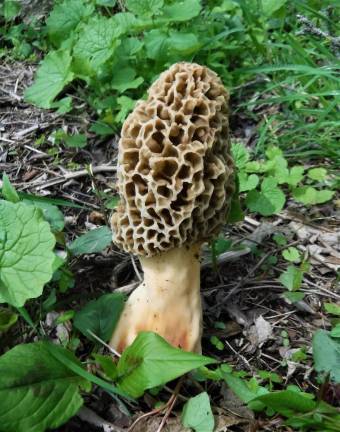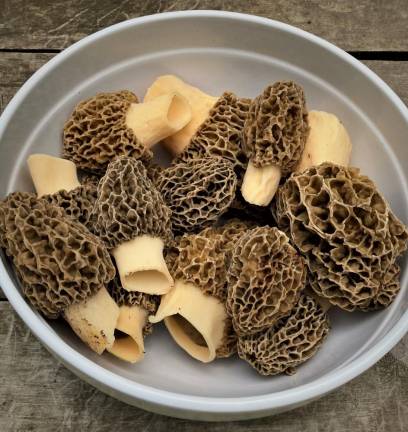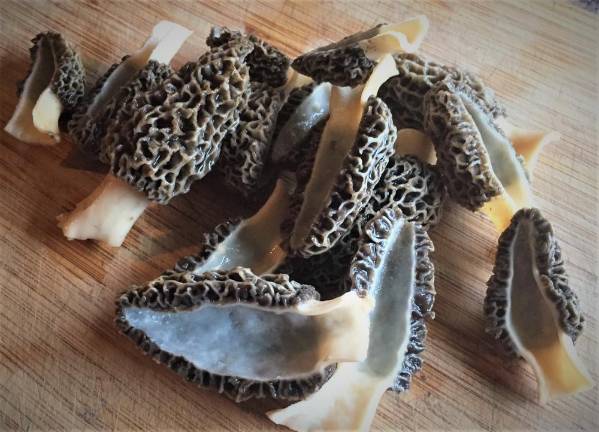The forager’s top prize



This time of year, when temps hover around 60 and dip to no less than 40 degrees, you may just find one very special mushroom. Or if you’re lucky, a whole mess of them. The specific seasonality of morels – usually late April through May in our region – along with a handful of other characteristics, make them one of the easier mushrooms to identify.
Consider where and on what morels grow. Morels never grow on tree trunks like reishi or on stumps like turkey tail. Although in relationship with trees, being both mycorrhizal (exchanging nutrients with tree roots) and saprotrophic (feeding off the decomposition of an aged tree), morels fruit from the soil.
Look for morels beneath canopy and in the company of dead or dying trees, specifically ash and apple trees, for which they seem to have a predilection. On my property, several years ago, I was delighted to find a bounty beneath a dying apple tree, and they have fruited every spring since. Usually, I’ll spot the first couple near the base of the trunk where they are easiest to spy; then as I wander and let my gaze relax, I’ll find a gaggle of them spread out amidst the grass, chickweed and garlic mustard.
In appearance, morels are one-of-a-kind. Their conical pitted caps resemble honeycombs supported on a finger-width stem. Caps are attached to the stem without free-hanging edges. The species of morel (Morchella genus) are debatable, therefore they are commonly categorized by color, such as black, gray or yellow. In our region, look for yellow morels with blond ridges and light to dark pits. Slice morels in half to find them perfectly hollow inside rather than fleshy, fuzzy or laced. Do acquaint yourself with potential lookalikes, such as those of the Verpa genus, the stinkhorn morel (Phallus impudicus) and the deadly false morel (Gyromitra esculenta).
If you’re confident you’ve found morels, slice each at the base and gently rinse clean of dirt and insects. Their earthy taste pairs beautifully with melted butter and alliums as well as cream and marinara sauces. Toss sautéed morels atop pasta and pizza or with spring onions, like wild leeks, to dress up scrambled eggs. Always cook wild mushrooms and if it’s your first time eating morels, have just a small portion before consuming a plateful – which, tasty as they are, would be easy to do.